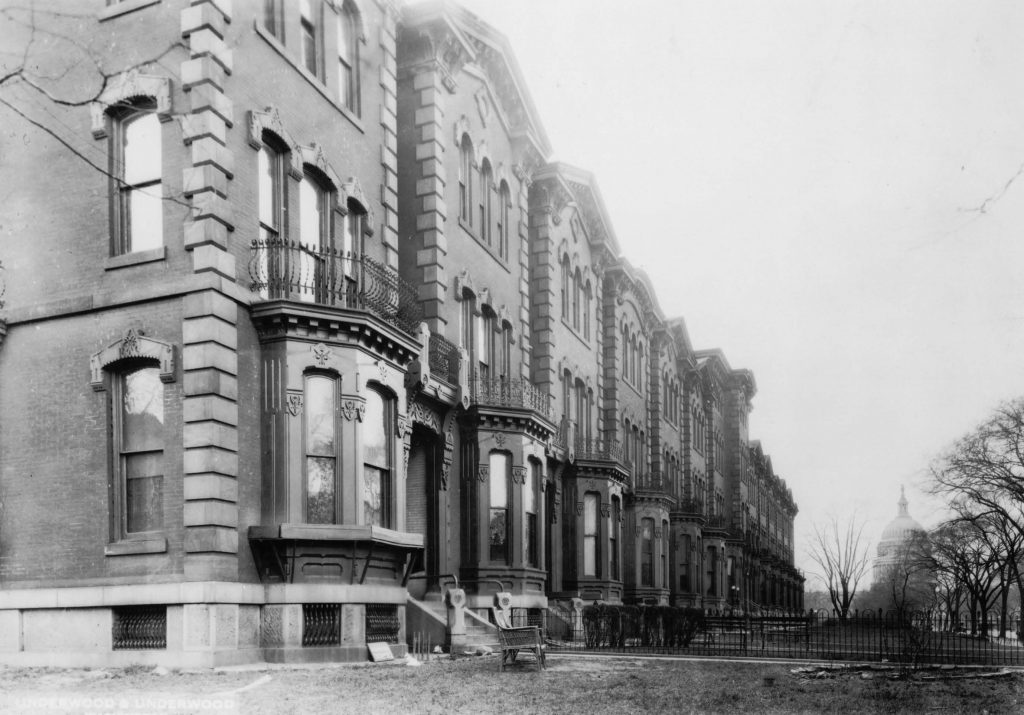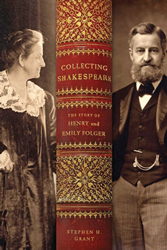
Fig. 1. North and west façades of the Folger Shakespeare Library the year before it opened, 1931. Note the scaffolding over some bas-relief friezes. Car parked near Puck Circle purports to be a 1928 Packard Roadster with license plate 239-751. The first person to identify its owner with convincing evidence I will reward with a copy of COLLECTING SHAKESPEARE (Image Folger Shakespeare Library)
It was not a foregone conclusion that the Folger Shakespeare Library be built two blocks from the U.S. Capitol. Hidden away among Folger papers as I scoured in the library’s underground vault during the research phase of Collecting Shakespeare: The Story of Henry and Emily Folger, I found a small undated note with ten possible sites for the Folger in alphabetical order written in co-founder Henry Folger’s meticulous clerk’s hand. From FSL Box 56 for 1–9 (1) Amherst, (2) Bernardsville, New Jersey; (3) Brooklyn; (4) Manhattan; (5) Nantucket; (6) Princeton; (7) Stratford-upon-Avon; (8) University Heights, Ohio; (9) Washington, D.C.; From FSL Box 60 for (10) Chicago.
Nantucket was included because the Massachusetts island off Cape Cod had been home to the Folger tribe since surveyor and court clerk Peter Foulger arrived from Norwich, England, in the 1660s. In Moby Dick, Herman Melville wrote of “Folgers and harpooners,” as Henry’s grandfather, master blacksmith Samuel, fashioned cutting-in spades for the whaling trade. Henry’s Uncle James, after leaving Nantucket to seek his fortune in California during the Gold Rush, founded Folgers Coffee. Ever the businessman, oilman Henry calculated that a plot of land on Nantucket would cost $25,000. But how inconvenient it would have been to take the ferry from the Hyannis, Mass. to Nantucket to visit the Folger Shakespeare Library.
Brooklynite Henry Folger eyed the lavish home at 1015 Fifth Avenue, which was owned by Jay Gould’s granddaughter, as well as the one next door belonging to socialite Edith Clark. These Manhattan properties each required an outlay of $550,000, Folger figured. Exerting the most pressure was Stratford-upon-Avon; if successful, this faraway lobby would have meant repatriating to British soil the Shakespeare treasures acquired largely at auctions in England. Folger also declared, “I have been importuned by several Colleges and Universities to locate my library of Shakespeareana with them, but I have never felt disposed to consider the suggestions.”

Fig. 2. Diagram in Henry Folger’s hand of four possible sites on Capitol Hill for the Folger Shakespeare Library. And the winner is? No. 2. (Image Folger Shakespeare Library)
“I finally concluded I would give it to Washington; for I am a patriot,” Folger affirmed. Before WWI, Washington was a sleepy southern town. Contributing to the literary and cultural enhancement of the political capital appealed to the Folgers. Perhaps without fully realizing the extent of their gift, the Folgers, in their quiet way, were responsible for an uptick in America’s reputation and prestige: the moment of arrival for the young country on the world scene as Europe’s equal, and, in some respects, superior.
Secrecy was a practice Folger applied to his real estate acquisitions as well as to his book buying. In 1918 he wrote to a land speculator known for his clandestine purchases asking him to “inquire very cautiously” about four locations on Capitol Hill. One, noted on city maps as “future gov’t building,” would become twenty years later the Supreme Court; that was a non-starter. A second became the Lutheran Church of the Reformation across 2nd Street NE from the Court on East Capitol Street. A third eventually became the Madison building of the Library of Congress. The Folgers decided on one of the most opulent blocks on the Hill: an assemblage of fourteen redbrick Italianate rowhouses known as Grant’s Row (no relation to the author). It cost Folger $317,000 and took him more than eight years to buy the properties on the 200 block of East Capitol Street SE. Henry Folger’s name appeared on no document related to the transaction: as a result, virtually no one knew he had become the owner.
In mid-January 1928, the Folgers read with horror a Washington Post article that a bill pending in Congress had identified Grant’s Row and the lot to the south for a Library of Congress annex. With trepidation, Henry wrote Herbert Putnam, the Librarian of Congress, “Should I give up the thought of making Washington the choice for a location [of my Shakespeare library]?” Without hesitation, an elated Dr. Putnam agreed to have the bill modified so that the annex would spare the Folgers’ property but occupy the remaining portion of the two lots. A wise Congress recognized the numerous benefits of having a private specialized library across the street from a public general library.

Fig. 3. Grant’s Row, the fourteen redbrick rowhouses built by Albert Grant (no relation) and which were demolished to make way for the Folger Shakespeare Library (Image Folger Shakespeare Library)
The Folgers would endow the library, build a decorative façade on its north side, and “dedicate this remarkable collection to the culture of the American public.” Both House and Senate passed the modified legislation unanimously. President Coolidge signed the bill (Public Law 70-453) into law on May 21, 1928.
It is fitting in April 2021, the 457th anniversary of Shakespeare’s birthday month, to celebrate the world-class Folger Shakespeare Library and its founders, who eighty-nine years ago defined the purpose of the research library: “give generations to come a better working knowledge and understanding of the works of the seventeenth century.”
(This post originally appeared on Johns Hopkins University Press Blog on July 21, 2014)
COLLECTING SHAKESPEARE:
The Story of Henry and Emily Folger
Just seven years ago, on the Ides of March 2014, Johns Hopkins University Press released COLLECTING SHAKESPEARE, the only biography about the founders of the Folger Shakespeare Library: Henry Clay Folger and Emily Jordan Folger. Since that time, the Folger and the world have celebrated the 450th anniversary of Shakespeare’s birth and 400th anniversary of his death.
COMMENTS:
CONNECT


0 Comments